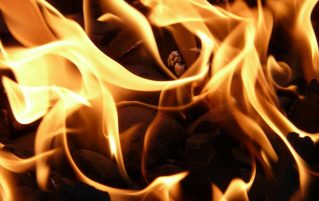

Covalent bonding is where non-metal elements share electrons. Many compounds contain covalent bonds, including DNA. The DNA double helix has two types of bonds, covalent and hydrogen. Covalent bonds exist within each linear strand and strongly bond bases, sugars and phosphate groups.
Most of us have heard of DNA, which contains the biological instruction to make all species. However, did you know that DNA is also a natural flame retardant and suppressant! The chemical structure of DNA means, when heated, the phosphate-containing backbone produces phosphoric acid. The phosphoric acid will remove water, and leaves behind a carbon-rich residue which is resistant to burning. The nitrogen in DNA releases ammonia which also inhibits combustion. Scientists are now trying to use DNA to produce inflammable clothing!!
GCSE scientists – you need to be able to explain what covalent bonding is. You also need to be able to draw dot and cross diagrams to represent a number of different covalent conpounds, including hydrogen. If you need some help with this, check out Part 1 of our “How to work with Covalent Bonding” revision guide. It explains what a covalent bond is, and takes you through a number of different compounds, showing how they bond. Example questions and answers are also included to check your understanding.
Click on the picture below to see the guide.
If you found this useful and think you would benefit from some additional help, please contact us.
